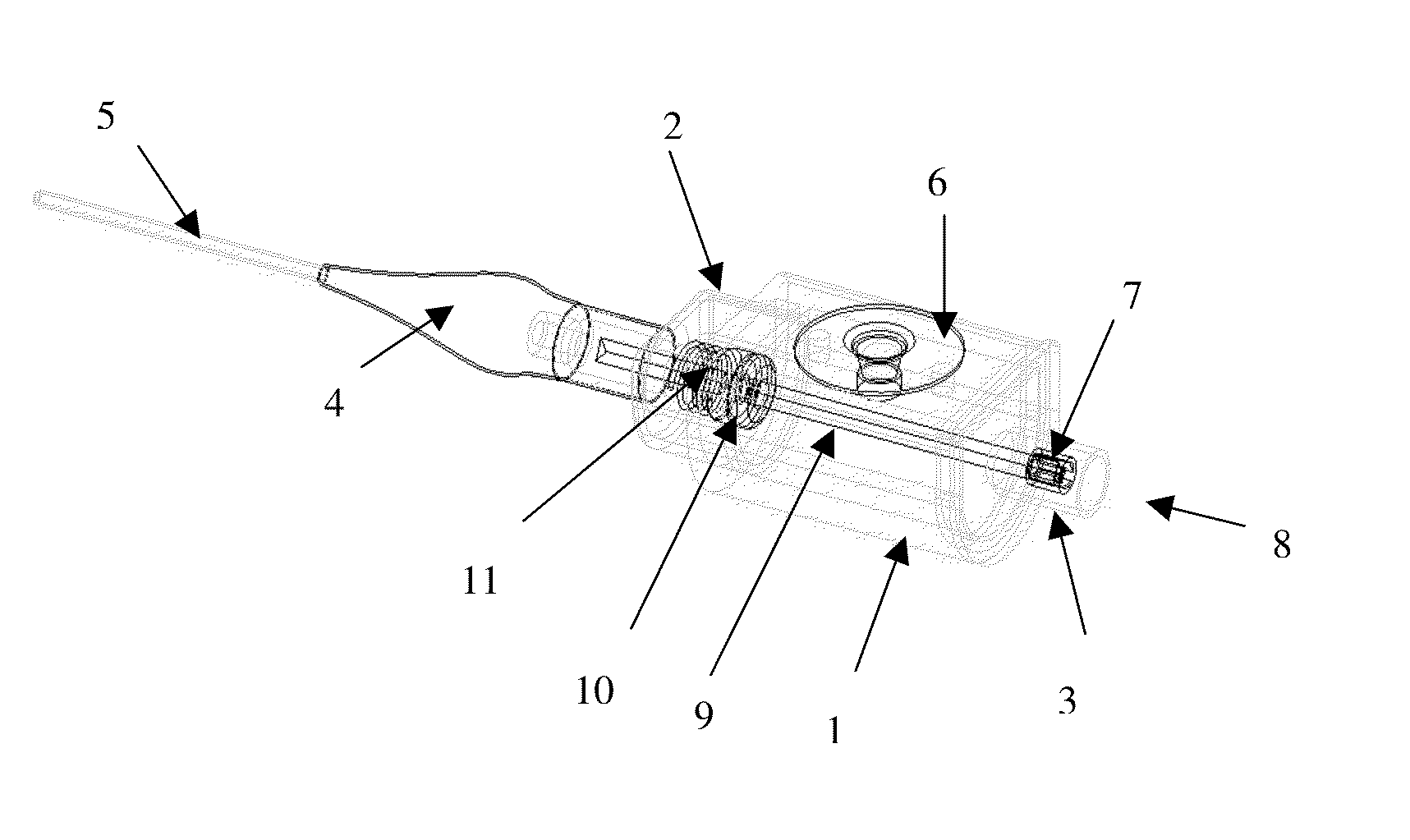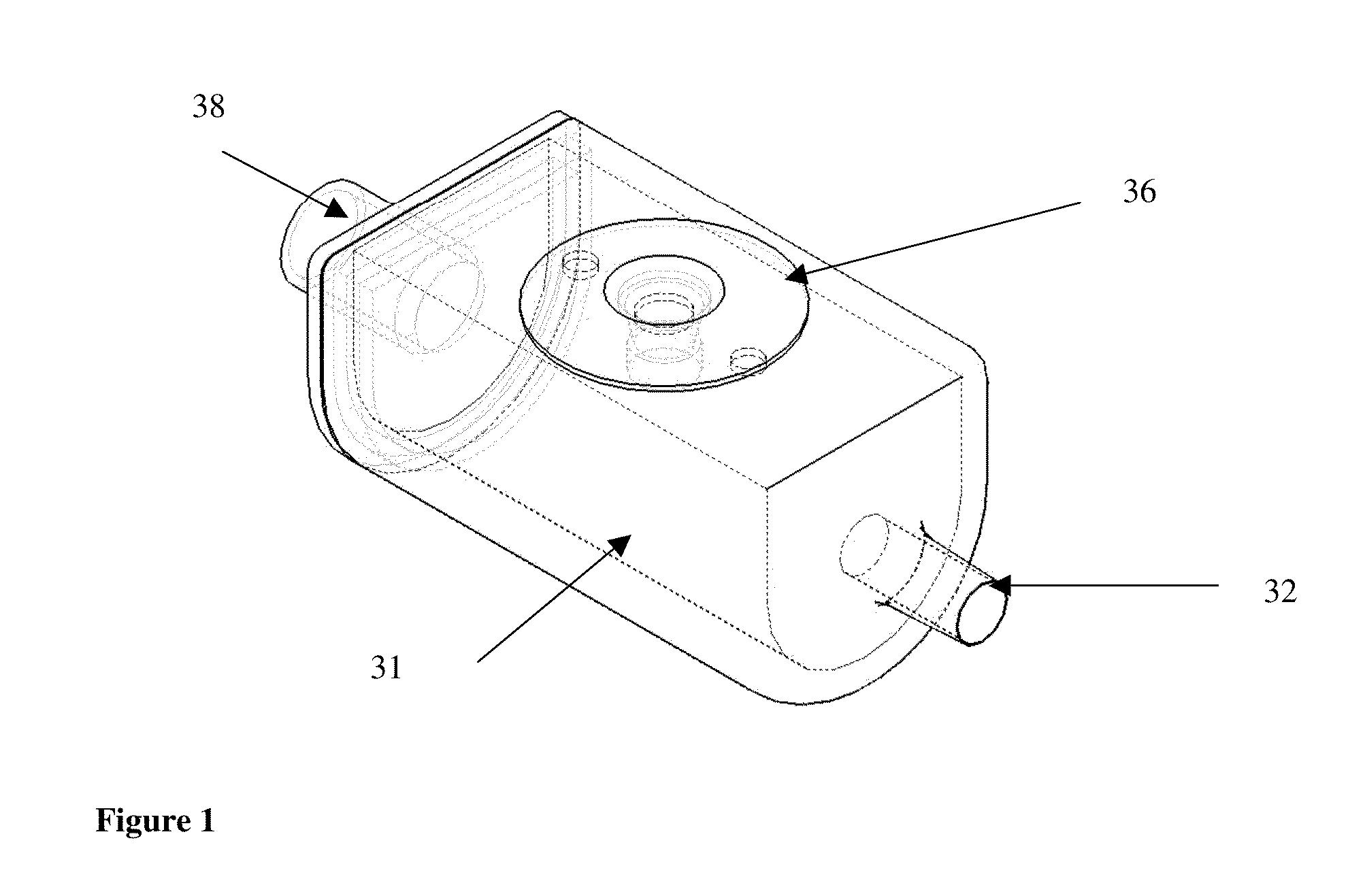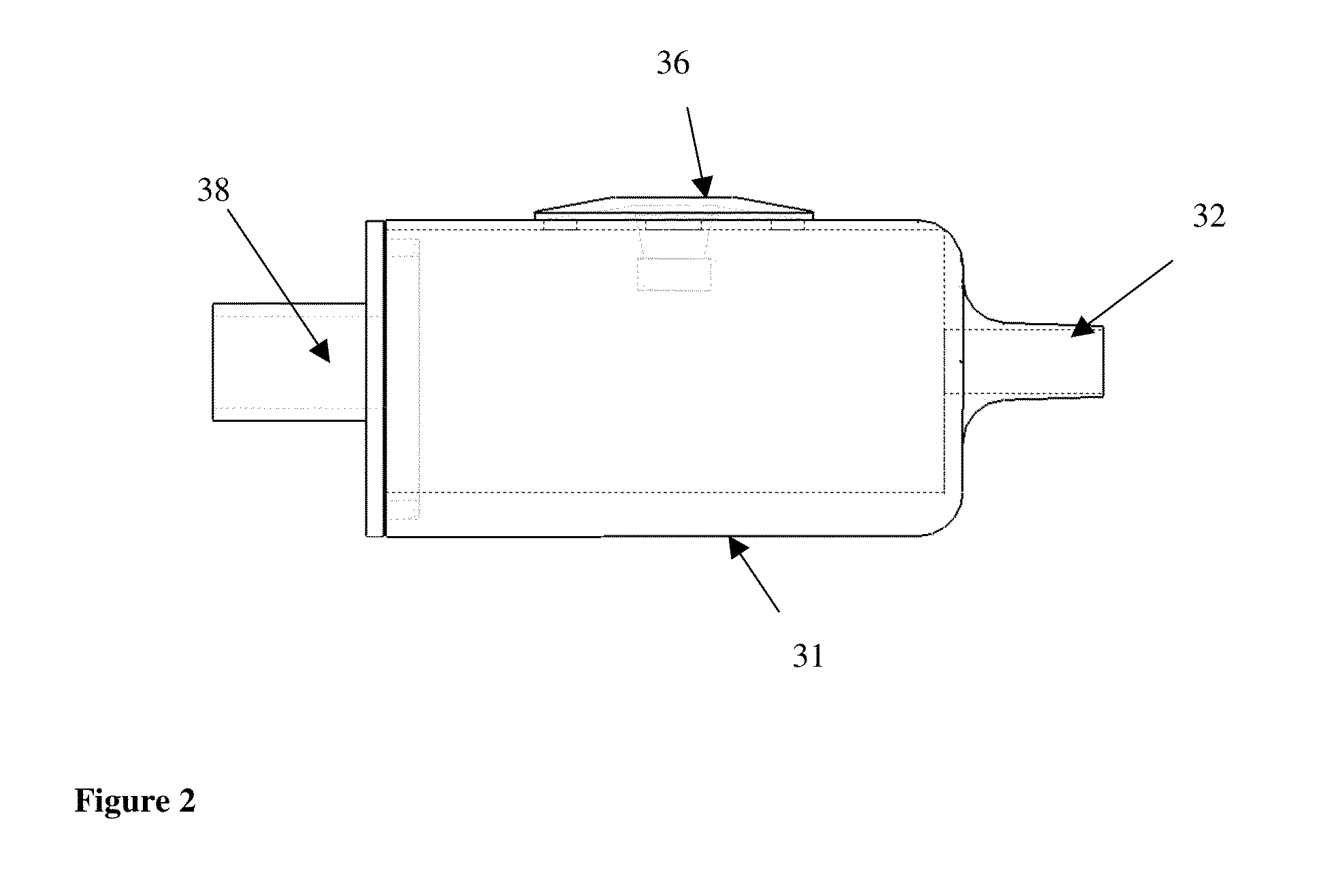Pressure release means and placement indicator for inflatable catheter or respiratory gas supply retention means
a technology of inflatable catheters and indicators, which is applied in the direction of respirators, trachea tubes, wound drains, etc., can solve the problems of ett slipping or falling out, pneumonia and death, and the risk of local tissue damage to the patient, and achieves the effect of reducing the risk of infection, and improving the safety of patients
- Summary
- Abstract
- Description
- Claims
- Application Information
AI Technical Summary
Benefits of technology
Problems solved by technology
Method used
Image
Examples
Embodiment Construction
[0028]One embodiment of the invention as an adaptor to provide inflation pressure control to an ETT or other catheter with inflatable retention means will now be described with reference to FIGS. 1 to 3.
[0029]In FIG. 1, the adaptor is shown in a perspective view and in FIG. 2, the adaptor is shown in a side view. The adaptor as shown is comprised of a main body 31, valve 36 and fluid supply interface cap 38.
[0030]Main body 31 has distal and proximal ends with the distal end having the ETT or catheter interface 32 and with the proximal end connecting to the fluid supply interface cap 38. Main body 31 has a passage to allow fluid to move through main body 31 between and through ETT or catheter interface 32 and interface cap 38. Joined to main body 31 is valve 36, which in FIGS. 1 to 3 is drawn as an umbrella valve that joins to main body 31 preferably on an external surface. Main body 31 (and main body 1 in FIGS. 4 to 6) can be cheaply manufactured using plastics and can be dyed to ha...
PUM
 Login to View More
Login to View More Abstract
Description
Claims
Application Information
 Login to View More
Login to View More - R&D
- Intellectual Property
- Life Sciences
- Materials
- Tech Scout
- Unparalleled Data Quality
- Higher Quality Content
- 60% Fewer Hallucinations
Browse by: Latest US Patents, China's latest patents, Technical Efficacy Thesaurus, Application Domain, Technology Topic, Popular Technical Reports.
© 2025 PatSnap. All rights reserved.Legal|Privacy policy|Modern Slavery Act Transparency Statement|Sitemap|About US| Contact US: help@patsnap.com



